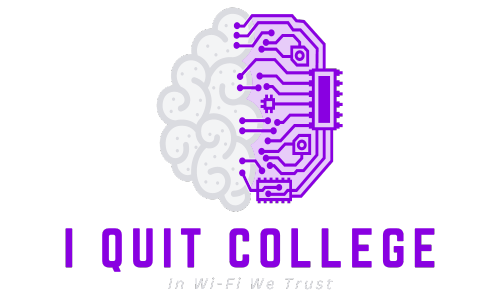As an executive leader, it is crucial to stay ahead of the constantly evolving and disruptive market trends in your industry. In today’s fast-paced business environment, being proactive and adaptable is essential for maintaining a competitive edge and ensuring the long-term success of your organization.
Current market trends can provide valuable insights into the directions your industry is heading and the opportunities it presents. By analyzing market trend reports, conducting market research, and staying informed about emerging market trends, you can make informed decisions that drive growth and innovation.
Understanding market trends goes beyond simply monitoring numbers and statistics. It requires a deep understanding of consumer behavior, technological advancements, industry shifts, and global market forces. By gaining this holistic perspective, you can anticipate trends, identify potential risks, and pivot your strategies to seize new opportunities.
In this article, we will explore effective strategies that can help you adapt to market trends and stay ahead in your industry. From scanning the horizon for emerging trends to listening to your customers’ changing expectations, we will provide practical insights and actionable steps you can take to navigate the dynamic landscape of your market.
Key Takeaways:
- Regularly analyze market trend reports and conduct market research to stay informed about current and emerging market trends.
- Understand the underlying factors influencing market trends, including consumer behavior, technological advancements, and global market forces.
- Anticipate changing customer expectations by actively listening to their needs and preferences through feedback, surveys, and data analytics.
- Learn from your competitors by conducting competitor analysis, benchmarking, and staying updated on their strategies and offerings.
- Cultivate a learning culture in your organization to foster innovation, adaptability, and resilience in the face of market trends.
Scan the Horizon: Identifying Emerging Trends
Staying ahead of market trends requires a proactive approach that involves scanning the horizon for signals of change. By looking beyond your immediate competitors and customers, you can identify emerging trends that have the potential to shape the future of your industry.
One effective tool for identifying these trends is a PESTLE analysis, which examines the political, economic, social, technological, legal, and environmental factors that may impact your business. This analysis helps you gain a holistic view of the external forces at play and evaluate their potential influence on your industry.
Scenario planning is another valuable technique for identifying emerging trends. By creating different plausible scenarios of the future, you can explore various possibilities and assess the potential impact of each scenario on your business. This exercise allows you to better understand the uncertainties and risks associated with emerging trends, enabling you to develop robust strategies to navigate them.
SWOT Analysis: A Strategic Tool
A SWOT analysis is a powerful tool for identifying opportunities and threats arising from emerging trends. This analysis enables you to assess your organization’s strengths, weaknesses, opportunities, and threats in relation to the changing market landscape.
By conducting a comprehensive SWOT analysis, you can identify how your strengths can be leveraged to capitalize on emerging trends and how to mitigate your weaknesses to minimize potential risks. Additionally, analyzing the opportunities and threats arising from emerging trends helps you align your business strategies to stay ahead.
“Scanning the horizon for emerging trends is not just about predicting the future; it’s about anticipating and preparing for different possibilities.”
Being proactive in identifying and understanding emerging trends allows you to position your organization advantageously in the market. It gives you the opportunity to be an early adopter, creating new products or services that align with these emerging trends and meeting the changing needs of your target audience.
Listen to Your Customers: Anticipating Changing Expectations
Listening to your customers is a fundamental strategy for staying ahead of market trends. By understanding their needs, preferences, and pain points, you can tailor your products or services to meet and even exceed their expectations. Collecting feedback through surveys, interviews, focus groups, and social media channels allows you to gather valuable insights into their changing demands and requirements.
One effective method is conducting surveys to collect quantitative data on customer satisfaction levels, product preferences, and overall experience. These surveys provide valuable feedback in a structured format, allowing for analysis and identification of trends. Interviews and focus groups, on the other hand, provide qualitative insights, enabling a deeper understanding of customers’ motivations and desires.
Social media platforms offer an excellent avenue for engaging with customers and listening to their opinions and concerns. By monitoring and engaging in conversations on social media channels, you can gain real-time feedback and gauge public sentiment towards your brand, products, or services.
Utilizing Data Analytics and Customer Segmentation
Data analytics plays a vital role in understanding customer behavior and preferences. By analyzing customer data, such as purchase history, browsing patterns, and engagement metrics, you can uncover valuable insights that guide your decision-making process. These insights help you anticipate changing expectations and identify emerging trends.
Customer segmentation is an effective strategy for understanding and targeting specific customer groups. By dividing your customer base into segments based on characteristics such as demographics, behaviors, and preferences, you can tailor your offerings to each group’s unique needs. This personalization enhances customer satisfaction and loyalty while staying ahead of market trends.
Persona Creation: Understanding Your Customers on a Deeper Level
Creating customer personas is another valuable technique for understanding your customers’ needs and anticipating their expectations. Personas are fictional representations of your ideal customers, based on real data and insights. Through thorough research and analysis, personas provide a detailed understanding of your target audience and serve as a reference point when making strategic decisions.
Personas encapsulate a variety of information, including demographics, goals, motivations, pain points, and preferred communication channels. By empathizing with your customers and putting yourself in their shoes, you can develop products, services, and marketing campaigns that resonate with their needs and desires.
| Method | Description |
|---|---|
| Surveys | Quantitative feedback through structured questionnaires. |
| Interviews and focus groups | Qualitative insights through in-depth conversations and group discussions. |
| Social media | Real-time feedback and public sentiment analysis through online platforms. |
| Data analytics | Analysis of customer data to identify trends and patterns. |
| Customer segmentation | Dividing the customer base into groups with shared characteristics. |
| Persona creation | Development of fictional representations of target customers. |
Learn from Your Competitors: Benchmarking and Differentiation
Staying ahead of market trends requires a deep understanding of your competitors’ strategies, strengths, and weaknesses. By learning from your competitors, you can identify gaps and opportunities in the market, differentiate yourself, and gain a competitive edge.
To effectively learn from your competitors, you can employ a variety of techniques and tools. One such tool is benchmarking, which involves comparing your performance, products, or services to those of your competitors. This analysis helps you identify areas where you can improve and implement best practices in your own business.
Porter’s five forces analysis is another valuable tool for understanding your competitive landscape. It examines the bargaining power of suppliers and customers, the threat of new entrants, the threat of substitute products or services, and the intensity of competitive rivalry. This analysis provides insights into industry dynamics and how you can position your business strategically.
In addition to these tools, conducting competitor profiling enables you to gain a deeper understanding of your competitors’ strategies, strengths, and weaknesses. This involves researching and analyzing their product offerings, pricing strategies, marketing tactics, and customer base. By understanding their approach, you can identify areas for improvement and develop unique selling points.
Market research is another crucial aspect of learning from your competitors. This involves gathering and analyzing data about your target market, industry trends, and customer preferences. By staying abreast of market dynamics, you can adapt your products, services, and marketing strategies to meet changing consumer demands.
One effective way to gain insights into your competitors’ customer experience is through mystery shopping. By posing as a customer, you can evaluate their sales process, customer service, and overall experience. This firsthand experience allows you to identify areas where you can outperform your competitors and enhance customer satisfaction.
Furthermore, conducting competitor analysis helps you understand how your competitors position themselves in the market, what value propositions they offer, and how they communicate with their audience. This information allows you to identify unique selling points and differentiate your business.
Online reviews also play a vital role in learning from your competitors. By analyzing the feedback and comments customers leave about your competitors’ products or services, you can identify areas where you can excel and provide a better customer experience.
To summarize, learning from your competitors through benchmarking, Porter’s five forces analysis, competitor profiling, market research, mystery shopping, competitor analysis, and online reviews allows you to gain valuable insights, identify gaps and opportunities, and differentiate your business. By staying informed about your competitors’ strategies and innovations, you can adapt and respond proactively to market trends.
Experiment and Innovate: Creating Value and Gaining a Competitive Edge
Experimenting and innovating with new ideas, products, or services is a crucial strategy for staying ahead of market trends. By embracing a culture of experimentation and innovation, businesses can continuously evolve and adapt to changing customer needs and preferences. This section explores various methodologies and tools that can be utilized to experiment and innovate effectively.
Design Thinking: Fostering Creativity and Problem-Solving
Design thinking is a human-centered approach that fosters creativity and problem-solving. It involves empathizing with customers, defining their needs and pain points, ideating potential solutions, prototyping and testing, and iterating based on feedback. By applying design thinking principles, businesses can develop innovative products and services that resonate with their target audience.
Lean Startup: Iterating Towards Success
The lean startup methodology emphasizes the importance of iterating quickly and efficiently to validate assumptions and hypotheses. By employing a build-measure-learn feedback loop, businesses can test their ideas in the market, gather valuable insights, and make data-driven decisions. This iterative approach minimizes the risk of failure and enables businesses to create a minimum viable product (MVP) that meets customer needs.
Agile Methodology: Adapting to Change
Agile methodology, widely used in software development, allows businesses to adapt to changing requirements and market conditions. It promotes cross-functional collaboration, frequent communication, and continuous improvement. By breaking down projects into smaller, manageable tasks and delivering value incrementally, businesses can respond quickly to customer feedback and market demands.
Prototyping: Bringing Ideas to Life
Prototyping involves creating tangible representations of ideas, concepts, or products. It allows businesses to visualize and test their ideas before investing significant resources. Prototypes can take various forms, from simple sketches or mockups to interactive digital prototypes. By gathering feedback from stakeholders and users early in the process, businesses can refine their ideas and ensure they meet customer expectations.
Minimum Viable Product (MVP): Validating Assumptions
A minimum viable product (MVP) is the most basic version of a product that can be released to gather feedback and validate assumptions. By launching an MVP, businesses can learn from real-world user interactions, understand customer needs and preferences, and iterate their product accordingly. MVPs enable businesses to reduce the time and cost of development while delivering value to customers.
Feedback Loops: Continuous Improvement
Feedback loops are essential in the experimentation and innovation process. By actively seeking feedback from customers, stakeholders, and employees, businesses can identify areas for improvement, uncover new opportunities, and refine their offerings. Feedback loops foster a culture of continuous learning and improvement, accelerating innovation and driving the creation of customer-centric solutions.
By adopting these experimentation and innovation methodologies and tools, businesses can create value for their customers and stakeholders, gain a competitive edge, and stay ahead of market trends. The ability to iterate quickly, adapt to change, and deliver innovative solutions allows businesses to remain relevant and thrive in today’s dynamic business landscape.
Foster a Learning Culture: Building a Resilient Workforce
In today’s rapidly changing business landscape, fostering a learning culture within your organization is crucial for staying ahead of market trends and building a resilient workforce. By prioritizing continuous learning and development, you can equip your employees with the skills and knowledge they need to adapt and thrive in an ever-evolving industry.
Training, coaching, mentoring, and online courses are valuable tools that can help nurture a learning culture. These initiatives provide employees with opportunities to enhance their expertise, stay up-to-date with industry advancements, and acquire new skills that are relevant to their roles. Whether it’s technical training, leadership development, or personal growth, investing in the growth of your employees contributes to their professional development and boosts their confidence in tackling new challenges.
Feedback plays a crucial role in fostering a learning culture. Regularly providing constructive feedback to your employees helps them identify areas of improvement and encourages them to strive for excellence. It also creates an environment of trust, openness, and continuous improvement.
“Feedback is the breakfast of champions.” – Ken Blanchard
In addition to training and feedback, recognition and incentives play a vital role in fostering a learning culture. Recognizing and appreciating the efforts of employees who demonstrate a commitment to learning not only motivates them to continue their growth journey but also encourages others to follow suit. Implementing recognition programs and providing incentives for achievements related to learning and development can help create a positive and engaging environment where employees are inspired to expand their knowledge and skills.
Gamification is another effective strategy for fostering a learning culture. By incorporating game-like elements such as challenges, achievements, and rewards, you can make the learning process more enjoyable and engaging. Gamification encourages healthy competition, collaboration, and exploration, fostering a sense of excitement and motivation among employees to actively participate in learning activities.
Building a Resilient Workforce
A learning culture not only fosters adaptability and innovation but also contributes to building a resilient workforce. A resilient workforce is better equipped to navigate challenges, embrace change, and respond effectively to disruptions in the market. By investing in the development of your employees, you create a team that is agile, flexible, and capable of seizing opportunities.
| Benefits of a Learning Culture for Building a Resilient Workforce | Examples |
|---|---|
| Enhanced problem-solving skills | Employees who actively engage in learning opportunities are more equipped to analyze complex problems, think critically, and propose innovative solutions. |
| Increased adaptability | Continuous learning enables employees to adapt quickly to changing circumstances, embrace new technologies, and explore alternative approaches. |
| Improved employee engagement and retention | A learning culture creates a sense of purpose, professional growth, and career development, leading to higher employee satisfaction and reduced turnover. |
| Higher productivity and performance | Employees equipped with up-to-date knowledge and skills are more productive, efficient, and capable of delivering high-quality results. |
| Enhanced employee morale | Creating a supportive environment that encourages continuous learning boosts employee morale and fosters a positive workplace culture. |
By fostering a learning culture and building a resilient workforce, organizations can position themselves at the forefront of market trends, drive innovation, and maintain a competitive edge.
Collaborate and Network: Accessing New Ideas and Opportunities
Collaborating and networking with other people and organizations is a powerful strategy to stay ahead of market trends. By building partnerships, forming alliances, engaging in joint ventures, attending events and conferences, and utilizing social media platforms, you can access a wealth of new ideas, insights, and opportunities. Through collaboration and networking, you have the chance to connect with industry experts, thought leaders, and innovators in your field or related fields, opening doors to valuable knowledge and experiences.
One effective way to collaborate and network is through attending industry events and conferences. These gatherings bring together industry professionals and experts from various backgrounds, providing a platform to exchange ideas, participate in workshops, and learn from keynote speakers. This not only enhances your understanding of market trends and best practices but also allows you to forge connections with potential partners or collaborators.
Additionally, social media platforms such as LinkedIn, Twitter, and Facebook offer opportunities to connect with a wide range of professionals and organizations. These platforms facilitate knowledge sharing, discussions on emerging market trends, and the formation of online communities where ideas are exchanged and partnerships are built.
Benefits of Collaborating and Networking
- Access to diverse perspectives and insights
- Opportunity to learn from industry experts
- Potential for joint ventures and strategic partnerships
- Platform for sharing knowledge and best practices
- Enhanced visibility and reputation in the industry
Collaboration is the key to unlocking new ideas and creating innovative solutions. By partnering with others, you can tap into a collective intelligence that goes beyond what any individual or organization can achieve on their own.
Example of Successful Collaboration
One notable example of collaboration in the technology industry is the partnership between Apple and IBM. In 2014, the two tech giants joined forces to develop enterprise-focused mobile applications. Apple provided its expertise in consumer technology, while IBM contributed its knowledge of enterprise software and services. The collaboration resulted in the creation of innovative solutions that catered to the specific needs of businesses, giving both companies a competitive edge in the market.
| Benefits of Collaboration | Example: Apple and IBM Partnership |
|---|---|
| Access to new ideas and insights | Combining Apple’s consumer technology expertise with IBM’s enterprise knowledge resulted in the development of innovative solutions. |
| Opportunities for joint ventures | Apple and IBM formed a strategic partnership to create enterprise-focused mobile applications. |
| Increased visibility and reputation | The collaboration between Apple and IBM showcased their ability to deliver tailored solutions, enhancing their credibility in the market. |
In conclusion, collaboration and networking are essential strategies for accessing new ideas, insights, and opportunities. By leveraging partnerships, alliances, joint ventures, events, conferences, and social media platforms, you can connect with industry leaders, learn from their expertise, and forge valuable collaborations. Embracing collaboration not only enhances your competitive advantage but also fosters a culture of innovation and growth within your organization.
Conclusion
Adapting to market trends is crucial for businesses to stay competitive and successful in a rapidly evolving industry landscape. By scanning the horizon and identifying emerging trends, businesses can anticipate change and prepare for different possible futures. Additionally, listening to customers and understanding their changing expectations allows businesses to create products or services that solve their problems and delight them.
Learning from competitors and benchmarking against industry leaders helps businesses identify gaps and opportunities in the market, enabling them to differentiate themselves and gain a competitive edge. Furthermore, experimenting and innovating with new ideas, products, or services allows businesses to create value and stay ahead of market trends.
Fostering a learning culture within organizations not only develops a resilient and adaptable workforce but also allows businesses to embrace change and innovation. By collaborating and networking with other industry professionals and accessing new ideas and opportunities, businesses can enhance their performance and reputation.
Ultimately, by adapting strategies and offerings to align with market trends, businesses can maintain a competitive edge and position themselves as industry leaders. Embracing change and leveraging technology play important roles in staying ahead and ensuring the long-term success of businesses in today’s dynamic business environment.
FAQ
How can I stay ahead of market trends in my industry?
As an executive leader, it is crucial to stay ahead of the constantly evolving and disruptive market trends in your industry. By scanning the horizon for signals of change, listening to your customers, learning from your competitors, experimenting and innovating, fostering a learning culture, and collaborating and networking, you can navigate market trends and ensure the success and competitiveness of your business.
How can I identify emerging trends in the market?
Scanning the horizon for signals of change is essential to staying ahead of market trends. Tools such as PESTLE analysis, scenario planning, and SWOT analysis can help you identify emerging trends and potential opportunities and threats. By being proactive in identifying and understanding these trends, you can prepare your organization for different possible futures.
How can I anticipate the changing expectations of my customers?
Listening to your customers is another key strategy for staying ahead of market trends. By collecting feedback through methods such as surveys, interviews, focus groups, and social media, as well as utilizing data analytics, customer segmentation, and persona creation, you can gain insights into their changing expectations and demands. This information allows you to anticipate their needs and preferences and create products or services that solve their problems and delight them.
How can I learn from my competitors?
Learning from your competitors is essential for staying ahead of market trends. By using tools such as Porter’s five forces analysis, competitor profiling, market research, mystery shopping, competitor analysis, and online reviews, you can assess the strengths and weaknesses of your competitors and identify their strategies, offerings, and innovations. This information helps you identify gaps and opportunities in the market and differentiate yourself from your competitors.
How can I gain a competitive edge in the market?
Experimenting and innovating with new ideas, products, or services is another strategy for staying ahead of market trends. By utilizing tools such as design thinking, lean startup, agile methodology, prototyping, MVP, and feedback loops, you can generate, test, and validate your assumptions and hypotheses. This process allows you to create value for your customers and stakeholders and gain a competitive edge in the industry.
How can I build a resilient workforce that can cope with market trends?
Fostering a learning culture in your organization is crucial for staying ahead of market trends. By implementing training, coaching, mentoring, online courses, feedback, recognition, incentives, and gamification, you can develop the skills and knowledge of your employees. This creates a resilient and adaptable workforce that can cope with change and embrace innovation.
How can collaboration and networking help me stay ahead of market trends?
Collaborating and networking with other people and organizations can help you stay ahead of market trends. By leveraging partnerships, alliances, joint ventures, events, conferences, and social media, you can access new ideas, insights, and opportunities. Collaboration and networking provide you with the opportunity to learn from others in your industry or related fields and enhance your performance and reputation.
Why is adapting to market trends crucial for businesses?
Adapting to market trends is crucial for businesses to stay competitive and successful in a rapidly evolving industry landscape. By scanning the horizon, listening to customers, learning from competitors, experimenting and innovating, fostering a learning culture, and collaborating and networking, businesses can navigate market trends and ensure their long-term success. Embracing change and leveraging technology also play important roles in staying ahead. By adapting strategies and offerings to align with market trends, businesses can maintain a competitive edge and position themselves as industry leaders.






